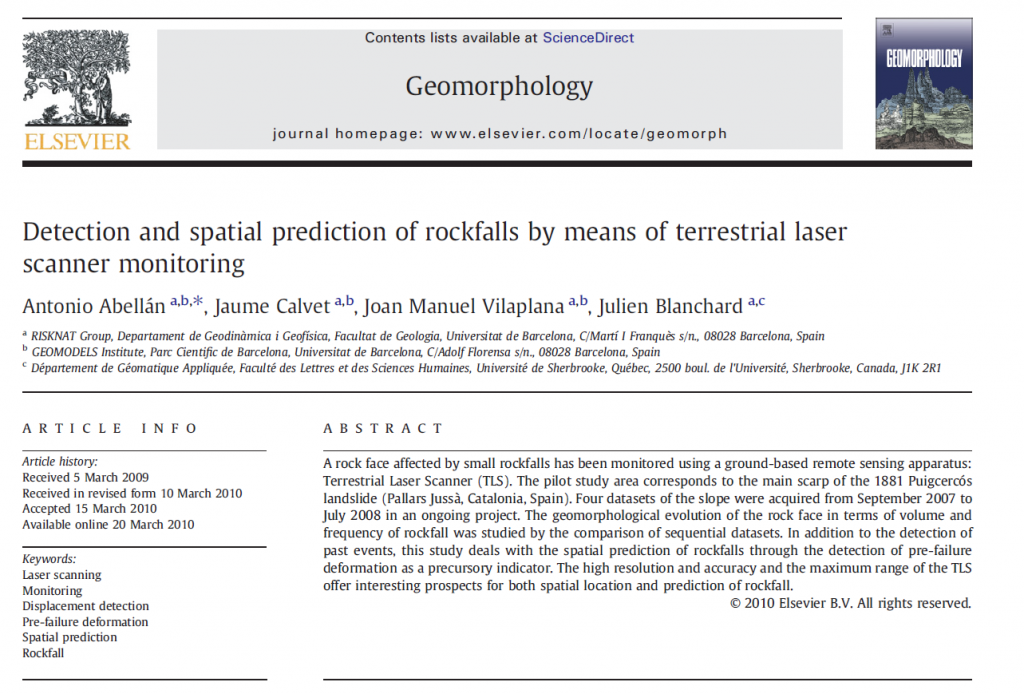2015.07 | discussion | Are rockfalls predictable?
I have been recently discussing with a colleague whether or not it is appropriate using the term “predictability” in our investigation of the rockfall phenomena… I think yes, but we’ve to agree on the used terminology, so I have rescued some previous thoughts from my PhD that I’d like to share with you:
- Spatial prediction: rock slope failures does not suddenly occur over the areas where no deformation is detected (i.e. “stable areas”); By opposition, the “moving areas” show a progressive failure, indicating areas where a rock is going to fall soon or after.. (once a part of the cliff has started to move, then there’s no way back)…
- Temporal prediction: The progressive acceleration of the precursory deformation indicates an imminent failure; the closest we get to the future date of failure (which we do not know in advance), the easiest the prediction will be, similarly than it occurs in weather forecasting… it’s difficult to know the weather for the next month but not for the next hours..
- … The pre-failure deformation (slope creep; Terzaghi, 1950) on certain parts of the rock face reflects the dilation of joints in the slope prior to the failure… This deformation is quantified in a discrete way through the displacement measured at each point of the dataset…..
- …The amount and duration of the pre-failure deformation appears to have a positive relationship with the dimensions of the rockfalls (which is good for us). Moreover, this duration could depend on external triggering factors, such as rainfall and freeze–thaw cycles….
- …. The pre-failure deformation can be very non-linear along time: in the case of sudden seismic events, the pre-failure deformation and the failure may occur in a short period of time with the result that the slope creep is masked….
____________________________________________________________________________
Abellán, A (2009). Improvements in our understanding of rockfall phenomenon by Terrestrial Laser Scanning – Emphasis on change detection and its application to spatial prediction. PhD Thesis, RISKNAT group, Faculty of Geodynamics and Geophysics. University of Barcelona, Spain, 185p.
Also, feel free to have a look at the following publication:


